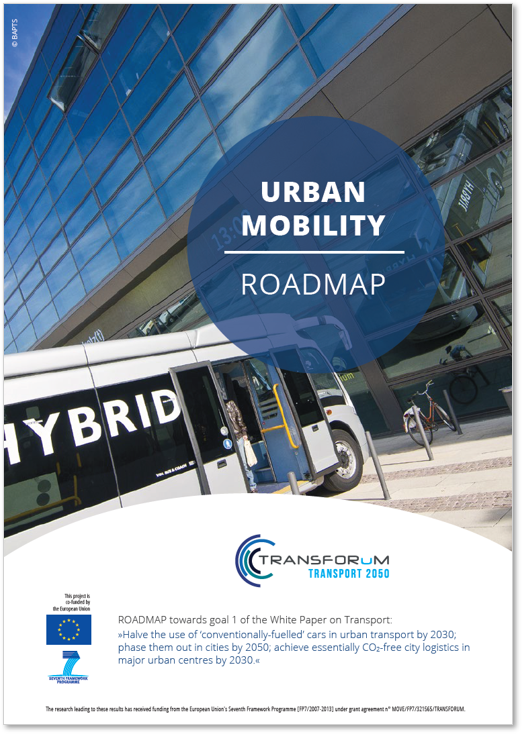The TRANSFORuM Roadmap on Urban Mobility supports the implementation of the European Commission’s 2011 White Paper goal: to halve the use of conventionally-fuelled cars in urban areas by 2030, phase them out by 2050, and achieve essentially CO₂-free logistics in major urban centres by 2030. Developed within the FP7 project TRANSFORuM (GA No. MOVE/FP7/321565), the report aggregates findings from stakeholder consultations, policy reviews, and workshops across ten European countries.
Key Technologies and Innovations
The roadmap outlines three strategic pillars to achieve sustainable urban transport:
-
Technological substitution of conventionally-fuelled vehicles
-
Behavioural and activity changes in passenger transport
-
Low-carbon city logistics technologies and practices
In terms of technological innovation, the report emphasizes a shift to electric vehicles (EVs), hybrids, and alternative fuels like hydrogen and biofuels. Countries like Norway and cities such as Madrid and Gdynia showcase successful deployment models. Norway’s national policies—such as tax incentives, toll exemptions, and bus lane access—have accelerated EV adoption. The Autolib’ EV car-sharing system in Paris exemplifies how shared mobility can accelerate electrification and reduce car dependency.
Supporting technologies include the development of Electric Vehicle Supply Equipment (EVSE) and smart grid integration. The report underlines the importance of standardized infrastructure (e.g. EU-wide EV plug standards) and the development of hydrogen and biofuel supply chains. While hydrogen fuel cell vehicles (FCVs) and second/third-generation biofuels show promise, EVs remain the most mature and widely supported path.
In logistics, City Logistics Service Centres (CLSCs) and Electric Freight Vehicles (EFVs) are promoted as means to reduce urban freight emissions. However, these solutions face viability issues without sustained subsidies. The STRAIGHTSOL project is cited as an EU-funded initiative that validated these systems’ environmental benefits, albeit at higher operational costs.
Policy and Governance Insights
The report stresses that technological solutions alone are insufficient. Political leadership, governance frameworks, and behavioural change are equally critical. A multi-level governance approach—engaging local, regional, national, and EU actors—is necessary for coordinated action.
Land-use planning, compact urban design, and Sustainable Urban Mobility Plans (SUMPs) are highlighted as tools for reducing the need for private vehicle use. Compact cities with efficient public transport networks, such as those in Western Europe, can shift travel behaviour more effectively.
The roadmap proposes a “building blocks” strategy, where different cities choose context-appropriate measures. These include:
-
Expanding public transport and non-motorised transport (cycling, walking)
-
Introducing congestion charges (e.g. London and Stockholm)
-
Encouraging car-sharing platforms
-
Promoting city-level EV policies and incentives
Performance Data and Application Links
-
EV adoption: Norway leads in EV market share, supported by national incentives.
-
Infrastructure: France’s Autolib’ has over 5,000 charging points; Gdynia retrofitted diesel trolleys to electric.
-
Modal shifts: Public transport and cycling rates are higher in Western Europe; Central and Eastern European cities face ageing infrastructure and rising car ownership.
Barriers and Recommendations
The roadmap identifies key barriers:
-
Economic: High upfront costs for EVs and infrastructure
-
Technological: Battery range anxiety and lack of charging infrastructure
-
Social: Limited public awareness and acceptance
-
Governance: Fragmentation and lack of cross-sectoral coordination
To overcome these, the roadmap recommends:
-
Cross-sectoral cooperation between public authorities, private companies, and civil society
-
Use of financial instruments like the European Investment Bank (EIB) to fund innovation
-
Setting measurable and city-specific benchmarks
-
Continued stakeholder engagement through forums like TRANSFORuM
Ultimately, the roadmap urges tailored, city-specific approaches embedded within a supportive European policy framework. It emphasizes that innovation must go hand-in-hand with strategic governance and citizen participation for effective urban transformation.

